|
Check out the image on the right to see how monarchs develop:
they change from an egg, to a caterpillar, to a pupa - the changing caterpillar hidden in a green case - and finally become
the largest butterfly in Bermuda.
Take a look below to see how monarchs live in Bermuda: what caterpillars eat, where
they hide when they're encased as green pupas, and where butterflies fly and look for nectar to drink.
Check back with
us soon for fun tidbits on monarchs in Bermuda and other interesting stories on monarchs around the world.
If you
have any questions, or want to tell us about what you're doing for monarchs right now, drop us a note at MonarchTalk@bermudamonarch.org.
We'll post it online and give you feedback.
|
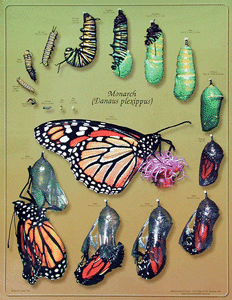
|
|
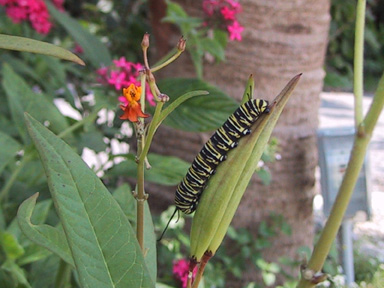
© Bermuda Monarch Conservancy
Monarch
caterpillars have yellow, black and white stripes. They reach a couple of inches in length when they're well-fed. They eat
milkweed and nothing else - the leaves, and even the seed pods when leaves get scarce.
|
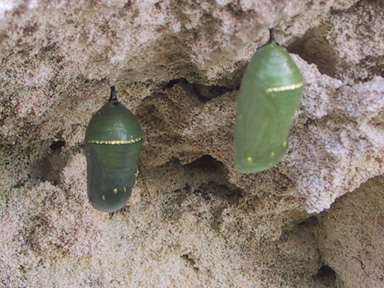
© Bermuda Monarch Conservancy
Caterpillars
hang upside down from a silk thread. They shed their dark skin as they encase themselves into a green one that quickly firms
up. A caterpillar slowly transforms into a butterfly inside the darkening case, and finally ejects from it when it's ready
to fly.
|
|
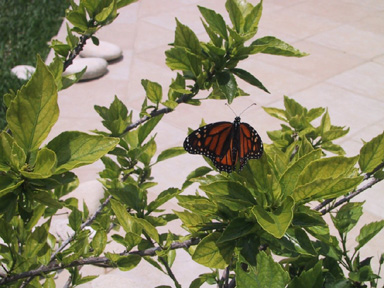
© Bermuda Monarch Conservancy
A
butterfly patrolling its territory and checking out the neighborhood.
|
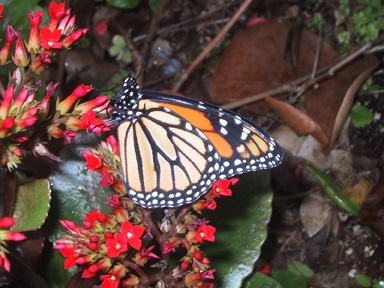
© Bermuda Monarch Conservancy
Monarchs
drink the nectar of flowers, the dew on leaves, and the water from puddles. They love sweet flowers like lantanas or pentas.
|